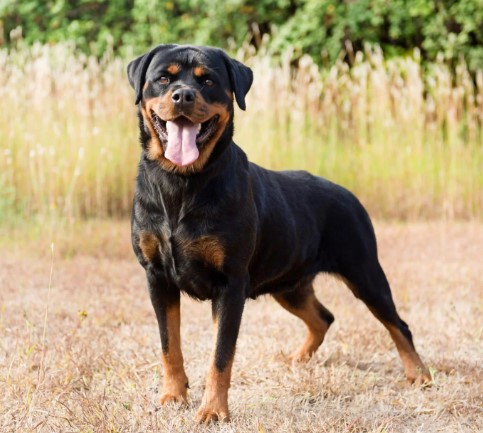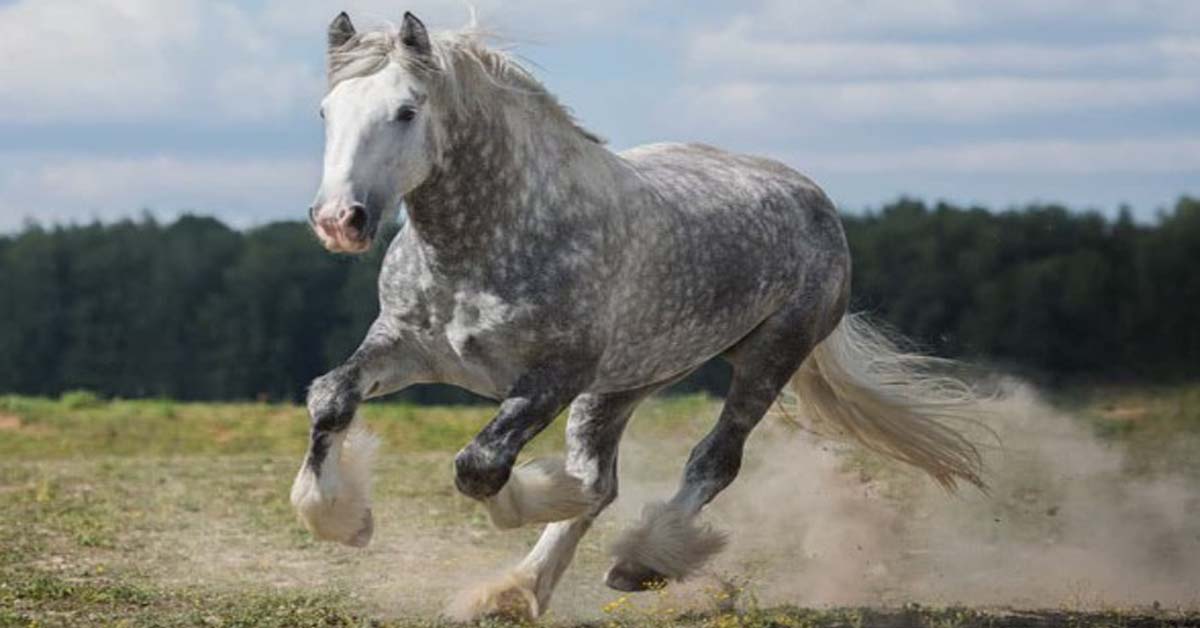With an outgoing and friendly disposition paired with a silky, luxurious coat, the Oriental Longhair cat truly stands out! These endearing felines share numerous characteristics with their Oriental Shorthair relatives and other cats in the Oriental breed. Playful, intelligent, and exceptionally social, they surpass the typical cat’s level of sociability, displaying an inherent need for attention.
Welcoming an Oriental Longhair cat into your home ensures a lifelong friendship. These cats thrive on shadowing their favorite person, investigating every nook from the refrigerator to the bathtub, and extending their paws to tap whenever something seems amiss.
Beyond expressive body language, Oriental Longhairs possess a remarkable vocabulary of meows, trills, and chirps, influenced by their Siamese heritage. Opinionated and fond of conversation, these gregarious cats enjoy engaging in vocal exchanges.
In terms of companionship, the Oriental Longhair cat has unique requirements. Prolonged periods of solitude are detrimental to their well-being, potentially leading to distress or the development of destructive habits. They crave social interaction and thrive when surrounded by companions.
While they may have a preferred human to follow and snuggle with, Oriental Longhairs readily befriend other family members, including four-legged ones. Another sociable cat or a friendly dog makes an excellent companion, especially for individuals who spend extended periods away from home.
Among feline companions, Oriental Longhairs distinguish themselves with their exceptional affection. If your family seeks a warm and cuddly companion, this breed is more than willing to lend a paw.
- Oriental Longhair Origin: United Kingdom
- Oriental Longhair Lifespan: 10 – 15 years
- Weight: 2.3 – 4.5kg
- Oriental Longhair Size: Medium
- Oriental Longhair Length: Up to 18 inches
- Oriental Longhair Colors: They come in all colors, patterns, and eye colors
Oriental Longhair Breed Characteristics
Similar to its renowned predecessor, the Siamese, the Oriental Longhair exudes a vibrant personality and has no reservations about expressing it. These felines are vocal and relish engaging with people. Despite their outgoing nature, they possess a gentle disposition that safeguards them from becoming overly aggressive or bothersome (for the most part).
Energetic and inquisitive, they particularly enjoy partaking in playful activities with their household members. While they naturally gravitate towards human companionship, Oriental Longhairs also value the camaraderie of other cats and mild-mannered dogs.
| Affection Level: High | Friendliness: Medium |
| Kid-Friendly: High | Pet-Friendly: High |
| Exercise Needs: Medium | Playfulness: High |
| Energy Level: High | Intelligence: High |
| Tendency to Vocalize: High | Amount of Shedding: Medium |

History Of Oriental Longhair
Due to the concerted efforts of breeders aiming to incorporate every conceivable coat color and pattern within a single breed, Oriental Longhairs have emerged as one of the most diverse cats breeds globally.
The landscape of cat breeding underwent a significant decline during World War II. Following the war, as breeders resumed their activities, they engaged in innovative crosses that ultimately led to the creation of numerous modern cat breeds, including the Oriental Longhair.
In the 1950s, breeders initiated crosses involving Russian Blues, British Shorthairs, Abyssinians, and regular domestic cats with Siamese. Subsequent generations involved breeding these litters with Siamese, resulting in both pointed and non-pointed kittens. Over a brief span, these cats became virtually indistinguishable from Siamese, save for their distinct colors.
From this selective breeding, the non-pointed cats laid the groundwork for the development of the Oriental breed.
Initially, cats of various colors were assigned distinct breed names. However, as the spectrum of colors continued to expand, breeders opted to consolidate all non-pointed cats into a single breed—the Oriental.
Orientals exhibit short and long coat lengths, with the longhair variety boasting an extensive array of color and pattern combinations. Consequently, there exists an Oriental Longhair to captivate the preferences of every cat enthusiast.
Oriental Longhair Appearance
Resembling a Siamese in appearance, the Oriental Longhair showcases a triangular head, large ears, and almond-shaped eyes. However, longhairs distinguish themselves with more slender and elegant bodies, complemented by long, plumed tails.
Renowned for its extensive diversity, the breed boasts a broad spectrum of coat colors and patterns. With nearly 300 variations, the Oriental Longhair presents a remarkable array, surpassing the variety offered by any other breed, except its short-haired counterpart.
Oriental Longhair Temperament
Oriental Longhairs are sociable and occasionally assertive felines that flourish in the company of humans. They thrive in households where they can form bonds with a multitude of other pets or individuals, including children.
Known for their preference to be where the action is, Orientals openly express their desire for attention. Highly vocal, they have a tendency to follow their human companions around the house, engaging in (sometimes one-sided) conversations. They dislike being left alone and may engage in mischievous behavior when isolated. As a result, many people opt to have pairs of Orientals to provide mutual entertainment.
Maintaining a kitten-like demeanor throughout their lives, these cats have a fondness for play and often have a cherished toy. They can be taught to play fetch or participate in cat agility. Given their intelligence, agility, and curiosity, tall cat trees are essential for this breed.
After an active day, Orientals relish curling up on a warm bed or in the lap of their preferred person.
Oriental Longhair Personality
Inheriting the lively and intelligent traits of their Siamese forebears, the Oriental Longhair is an elegant and animated cat, brimming with energy and curiosity. They establish strong bonds with family members and thrive on receiving attention and affection.
This breed is exceptionally active, taking pleasure in overseeing and being “helpful,” meaning they involve themselves in your activities, regardless of the task at hand. While they may be somewhat less boisterous than Siamese cats, managing these felines requires attention, as they can be quite a handful, and prolonged periods of unsupervised time are not advisable!
Oriental Longhair Health Problems
Oriental Longhairs are generally recognized as a healthy breed, although there are specific genetic conditions that may impact them, including:
Kinked Tails and Crossed Eyes: These distinctive features are inherited from their Siamese relatives. While neither trait is harmful, crossed eyes can potentially affect your cat’s visual acuity, making them more susceptible to injuries, especially when venturing outdoors.
Progressive Retinal Atrophy: This is a progressive degenerative condition that gradually results in blindness.
Liver Amyloidosis: This condition involves the accumulation of amyloid protein in the liver, diminishing its function and potentially leading to liver failure.

Oriental Longhair Bes Care Tips…
Ensuring your cat’s well-being at home involves employing common-sense practices, much like caring for one’s own health. Pay close attention to her diet, ensure she engages in ample exercise, regularly attend to brushing her teeth and coat, and promptly seek professional assistance, either from us or an emergency pet hospital, if anything seems unusual.
Adhering to the recommended schedule of exams and vaccinations is crucial for your pet’s health. During these check-ups, we will conduct necessary examinations and tests, specifically focusing on issues common to Oriental Longhairs.
An integral aspect of responsible pet care is enrolling your cat in pet health insurance. Throughout her life, there will be essential medical tests and procedures, and having pet health insurance will aid in covering these costs.
Best Food For
- Hill’s Prescription Diet y/d Chicken Flavor Dry Cat Food
- Hill’s Science Diet Adult Chicken Recipe Cat Food
- Hill’s Science Diet Adult Healthy Cuisine Roasted Chicken & Rice Medley Cat Food
- Hill’s Science Diet Adult Healthy Cuisine Seared Tuna & Carrot Medley Cat Food
Feeding
Each cat possesses distinctive preferences, dislikes, and dietary needs, reflecting their individuality. Nevertheless, as carnivores, every cat must derive 41 specific nutrients from their food.
The quantity of these nutrients is subject to variations influenced by factors such as age, lifestyle, and overall health. Consequently, the nutritional requirements of a growing, lively kitten differ from those of a less active senior cat.
Additional considerations involve providing the appropriate amount of food to sustain an “ideal body condition” in accordance with dietary guidelines. It is also important to cater to individual preferences, taking into account whether a cat favors wet or dry food recipes.
Oriental Longhair Grooming
The Oriental Longhair boasts a single-layer coat of medium length, appearing relatively short-haired when compared to breeds like Persians with more extended fur. Brushing once a day is generally sufficient to remove loose hair and minimize shedding.
Regular brushing not only aids in preventing hairball buildup but also contributes to the overall well-being of both you and your cat during grooming sessions.
In addition to their attractive appearance, these cats are industrious. Regular toenail trims are advisable to safeguard your furniture from potential damage. Lastly, consider incorporating tooth brushing into your cat’s care routine a few times a week. Introduce your kitten to a small toothbrush and cat-friendly toothpaste to ensure a lifetime of dental health.
Training
The remarkable intelligence of the Oriental Longhair renders them highly trainable. They readily grasp new commands and possess a distinct inclination to please their owner, an unusual trait among cats.
With a bit of patience, you can instruct your Oriental Longhair in various tasks, ranging from playing fetch to walking. They view training sessions as opportunities to strengthen their bond and spend quality time with their favorite human, making it advantageous to engage in such activities.
Litter training this cat breed requires some effort. While many kittens are potty trained upon their initial exposure to the litter box, their mothers often play a role in teaching them before they transition to their permanent homes.
Oriental Longhair Best Exercise
Oriental Longhair cats exhibit a high level of playfulness. Providing a tall cat tree, a couple of window seats, and a well-placed scratching post in each room is highly beneficial for both the cats and their owners.
In the absence of these essential items and a diverse array of toys, these cats may resort to leaping and climbing on every piece of furniture, discovering unconventional playthings such as toothbrushes, forgotten earrings on the nightstand, and even cherished collectibles, deeming them fair game.
Oriental Longhair Adoption center
Ensuring your kitten is healthy and well-socialized upon arrival hinges on finding a reputable breeder. Before deciding if the Oriental Longhair is the right fit for you, conduct thorough research, considering the breed’s notable vocal nature. Engage with other owners, breeders, and breed clubs to gather valuable insights.
A helpful starting point for your research is the Cat Fanciers Association‘s list of accredited breeders.
Alternatively, the adoption route can be rewarding, with options like reaching out to local shelters or exploring Petfinder for available Oriental Longhairs. While these purebred cats may not be abundantly common, the possibility of one needing a home due to abandonment is always present.
See More Cat Breeds For Further Research
FAQs
Oriental Longhair Price in India
What is the cost of an Oriental Longhair cat? The price of an Oriental Longhair cat in India typically ranges from $400 to $2,000, depending on whether it is classified as pet quality or breeding quality.
Are Oriental Cats Friendly?
The Oriental is an intelligent, affectionate, and devoted cat that holds a deep affection for its human family. They generally get along well with almost anyone, provided they are treated with respect.
Are Oriental Longhairs Hypoallergenic?
While considered non-allergenic, it is advisable to groom your Oriental Longhair regularly to minimize scratching. The personality of an Oriental cat is as unique as its distinctive coat.
Do Oriental Longhair Cats Shed?
As long-haired cats, Oriental Longhairs do experience a certain amount of shedding, although it is not as extensive as in some other cat breeds.
How Rare is a Long-Haired Cat?
Approximately 1 in 10 domestic cats in the US is estimated to be a domestic longhair. Despite their considerable population, you can still find numerous fully domesticated longhair cats in local shelters.












3 thoughts on “Oriental Longhair: Size, Weight, Lifespan, Personality Special Info”